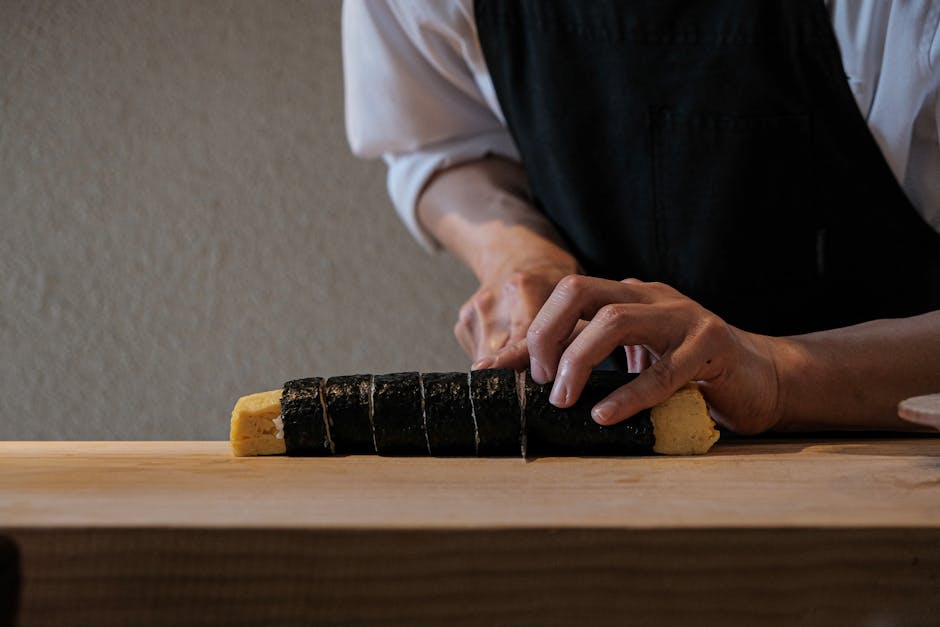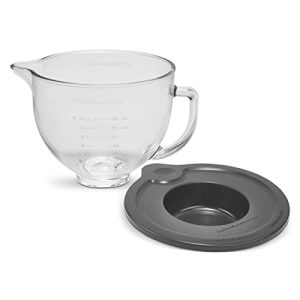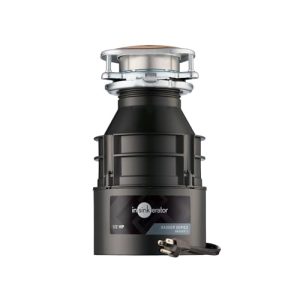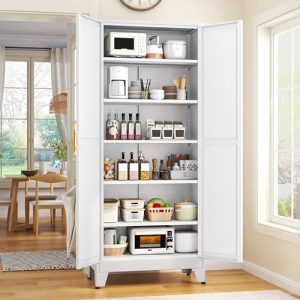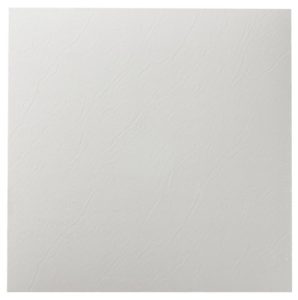Are you ready to give your kitchen cabinets a fresh, polished look? Cutting crown molding might sound tricky, but with the right steps, you can do it yourself and achieve professional results.
Imagine the satisfaction of seeing perfectly fitted molding adding elegance and style to your kitchen. In this guide, you’ll learn exactly how to cut crown molding for your cabinets with simple techniques that anyone can follow. Keep reading, and you’ll gain the confidence to tackle this project like a pro—no guesswork, no wasted materials, just clear, easy instructions tailored for you.
Tools Needed
Cutting crown molding for kitchen cabinets requires the right tools. Using proper equipment makes the process easier and ensures accurate cuts. Preparing tools before starting saves time and avoids mistakes.
Essential Cutting Tools
- Miter saw – for precise angled cuts
- Hand saw – useful for small adjustments
- Coping saw – perfect for inside corners
- Clamps – to hold molding steady while cutting
- Sanding block – smooths rough edges after cutting
Measuring Instruments
- Tape measure – measures molding length accurately
- Combination square – checks angles and straight lines
- Protractor – measures exact angles for complex cuts
- Marking pencil – marks cutting points clearly
Safety Gear
- Safety glasses – protect eyes from dust and debris
- Ear protection – reduces noise from power tools
- Dust mask – prevents inhaling sawdust
- Work gloves – protect hands from splinters and cuts
Types Of Crown Molding
Crown molding adds a beautiful finish to kitchen cabinets. Choosing the right type enhances the room’s style. Different types of crown molding vary in shape, material, and design. Understanding these types helps pick the best fit for your kitchen.
Common Profiles
Crown molding comes in various profiles. Some popular shapes include:
- Classic:Simple curves with elegant lines.
- Cove:Smooth, concave curves for a subtle look.
- Step:Layered edges creating a tiered effect.
- Egg and Dart:Decorative pattern with oval and arrow shapes.
Each profile changes the room’s feel, from modern to traditional.
Materials Used
Crown molding is made from different materials. Each has benefits and costs:
- Wood:Classic look, easy to paint or stain.
- MDF (Medium Density Fiberboard):Affordable, smooth surface, paint-ready.
- Polyurethane:Lightweight, moisture-resistant, durable.
- Plaster:Heavy, often used in historic homes.
Material choice affects durability and installation ease.
Choosing The Right Molding
Pick molding that matches cabinet style and kitchen size. Small kitchens need simpler, smaller profiles. Large kitchens can handle more detailed, larger moldings.
Consider moisture and heat in kitchens. Use materials that resist warping or damage. Color and finish should blend with cabinets and walls.
Measuring For Cuts
Measuring for cuts is a crucial part of installing crown molding on kitchen cabinets. Accurate measurements ensure your molding fits perfectly, avoiding costly mistakes and wasted material. Taking your time here sets a solid foundation for the entire project.
Taking Accurate Measurements
Start by measuring the length of each cabinet edge where the molding will go. Use a tape measure and double-check your numbers. Measure twice to cut once isn’t just a saying—it’s a lifesaver.
Don’t forget to measure both horizontal and vertical surfaces if your molding wraps around corners. Keep a notepad handy to jot down measurements clearly, so you don’t get confused later.
Marking The Molding
Once you have your measurements, transfer them onto the molding pieces. Use a pencil to mark the exact points where you’ll make your cuts. This step helps you stay organized and prevents guesswork during cutting.
Try marking the molding on the inside edge—this keeps your pencil marks hidden after installation. Label each piece if you have multiple cuts to avoid mixing them up.
Accounting For Angles
Crown molding often requires cuts at precise angles, especially around corners. You’ll need to determine the angle of your cabinet corners to cut the molding correctly. Most kitchen cabinets have either 90-degree or slightly irregular angles, so measure carefully.
Using a protractor or an angle finder tool can make this easier. Remember, incorrect angles lead to gaps and uneven joints that are tough to fix later. How confident are you with your angle measurements before making those first cuts?
Cutting Techniques
Cutting crown molding for kitchen cabinets requires precise techniques. Accurate cuts ensure a perfect fit and professional look. Understanding different cutting methods helps manage various corner types. Each corner type needs a specific approach to join molding neatly. Let’s explore the key cutting techniques for crown molding installation.
Miter Cuts Explained
Miter cuts are angled cuts used to join two pieces of molding at corners. The saw blade is set at an angle, usually 45 degrees, to create a clean joint. These cuts work well for outside corners and simple inside corners. Use a miter saw with a crown molding jig for best results. Double-check angles before cutting to avoid gaps.
Coping Cuts For Inside Corners
Coping cuts fit one piece of molding over the profile of another. This method creates tight inside corner joints. First, cut the first piece with a miter saw at 45 degrees. Then, use a coping saw to cut along the profile edge of the second piece. Coping allows for slight wall imperfections without gaps. It produces a seamless, professional finish.
Handling Outside Corners
Outside corners usually require two miter cuts. Both pieces are cut at complementary angles to fit snugly. Measure the angle of the corner accurately with an angle finder. Set the miter saw to the correct angle, often less than 45 degrees. Test fit pieces before final installation. Sand edges lightly for a smooth joint.
Common Mistakes To Avoid
Cutting crown molding for kitchen cabinets can be challenging. Misjudging angles or incorrect measurements often leads to poor fits. Ensuring precise cuts and proper alignment helps achieve a polished look.
Cutting crown molding for kitchen cabinets can be a rewarding DIY project, but it’s not without its pitfalls. Avoiding common mistakes ensures a smooth process and a polished finish. Understanding what to look out for can save you time, frustration, and even money.Incorrect Angles
One of the most frequent mistakes is cutting the molding at the wrong angle. Crown molding requires cuts at specific angles to fit snugly against the cabinet and ceiling. A simple slip-up in angle measurement can lead to gaps and misalignment. Always double-check the angle setting on your miter saw before making a cut. Consider making a test cut with scrap wood to ensure accuracy. This small step can prevent costly errors and ensure your molding fits perfectly.Poor Measurement Practices
Accurate measurements are crucial when working with crown molding. Even a slight miscalculation can result in pieces that don’t fit. Overestimating or underestimating can lead to wasted material and additional trips to the hardware store. Use a reliable tape measure and take note of each dimension. Write down your measurements immediately to avoid forgetting them. It’s better to measure twice and cut once than to risk an ill-fitting piece.Improper Tool Usage
Using the wrong tools or using them improperly can cause significant problems. Crown molding requires specific tools like a miter saw and coping saw. Misusing these tools can lead to rough edges and uneven cuts. Familiarize yourself with your tools before beginning the project. Watch instructional videos or read your tool’s manual to understand proper handling. If you’re not comfortable with a tool, practice on scrap materials until you are. By avoiding these common pitfalls, you can achieve a professional-looking result. Have you encountered any of these issues in your DIY projects? Share your experiences and tips in the comments below!Installation Tips
Installing crown molding on kitchen cabinets can transform the look of your space, giving it a polished, custom feel. However, fitting and securing the molding correctly is key to achieving a professional result. Pay attention to the details during installation to avoid gaps, loose pieces, or uneven lines that can ruin the effect.
Fitting The Molding
Start by dry-fitting the molding pieces before any glue or nails touch the wood. This helps you spot any misaligned corners or uneven cuts early. Hold each piece against the cabinet to check for tight seams and smooth transitions.
Don’t forget to check inside corners carefully—these often need slight sanding or trimming to fit snugly. If you notice gaps, try using a coping saw to cut the molding edges more precisely. Could a small adjustment here save you from a big fix later?
Securing The Pieces
Use a nail gun with finishing nails to attach the molding firmly to the cabinet frames. Always nail into solid wood areas to prevent cracking or weak holds. For extra stability, apply a small amount of wood glue along the back edges before nailing.
Be cautious not to overdrive nails, which can split the molding. A nail set tool helps you sink nails just below the surface without damage. If you’re working with painted cabinets, place painter’s tape along the edges to protect the finish while you work.
Finishing Touches
Once the molding is installed, fill nail holes and any small gaps with wood filler or caulk. Smooth the filler with a putty knife and let it dry completely before sanding. This step makes the molding look seamless and professional.
After sanding, apply touch-up paint or stain that matches your molding to blend repairs. Finally, clean the area to remove dust and debris. How much difference do you think these small finishing steps make in the overall appearance?
Troubleshooting Issues
Troubleshooting issues is a common part of cutting crown molding for kitchen cabinets. Mistakes or small problems can happen even to skilled DIYers. Fixing these issues quickly keeps your project on track.
Some problems may seem frustrating but have simple solutions. Understanding how to handle gaps, uneven cuts, and warped molding helps you achieve a clean, professional look.
Gaps And How To Fix Them
Gaps appear where two pieces of molding meet or at corners. These gaps happen due to inaccurate cuts or slight measurement errors.
- Use wood filler or caulk to fill small gaps.
- For larger gaps, add a thin shim behind the molding before nailing it in place.
- Sand the filled area smooth once dry for a seamless finish.
Painting over the filled gaps blends them into the molding’s color. Proper measuring and cutting reduce gaps upfront.
Uneven Cuts
Uneven cuts cause poor fitting joints and visible gaps. This issue occurs from incorrect saw angles or movement during cutting.
- Double-check your miter saw angle before each cut.
- Clamp the molding securely to avoid shifting while cutting.
- Practice cuts on scrap wood to improve precision.
Use a sanding block or file to smooth minor uneven edges. Re-cut pieces only if necessary to save material.
Dealing With Warped Molding
Warped molding bends or twists, making it hard to fit flat against cabinets or walls. Warping happens from moisture or poor storage.
- Choose straight, dry molding before starting your project.
- Use a damp cloth to slightly moisten the wood, then clamp it flat until dry.
- Apply gentle pressure with brad nails during installation to hold molding in place.
Replace badly warped pieces to avoid future problems. Proper storage keeps molding straight and ready to use.
Frequently Asked Questions
How Do You Measure Crown Molding For Kitchen Cabinets?
Measure the length of the cabinet tops first. Then, measure the angles where the molding will fit. Use a tape measure and protractor for accuracy. Always add extra length for cutting errors. Proper measurements ensure a perfect fit and avoid waste.
What Tools Are Needed To Cut Crown Molding?
You need a miter saw, measuring tape, pencil, and safety glasses. A coping saw helps for inside corners. A protractor or angle finder improves cutting precision. These tools ensure clean, accurate cuts for professional results.
How To Cut Inside Corners For Crown Molding?
Set your miter saw to 45 degrees for inside corners. Cut one piece coping the profile of the other. This creates a tight, seamless joint. Practice on scrap pieces for accuracy before cutting your molding.
Can Crown Molding Be Cut Without A Miter Saw?
Yes, you can use a handsaw and miter box. This method is less precise and slower. A miter saw is recommended for cleaner, faster cuts. Handsaw cutting requires more skill and patience.
Conclusion
Cutting crown molding for kitchen cabinets takes some practice. Use the right tools and measure carefully each time. Take your time to make clean, precise cuts. Check your angles twice before cutting. With patience, your molding will fit perfectly. This simple skill can improve your kitchen’s look.
Keep practicing, and you will get better. Don’t rush the process. Enjoy the satisfaction of a neat, finished project.

Sophie Hartwell is the founder of KitchenQuik.com, where she shares kitchen tips, smart cooking hacks, and the best product picks to make everyday cooking easier and more enjoyable.
